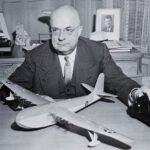Experiencing that uncomfortable pressure in your ears after a flight, often referred to as “airplane ear,” is a common annoyance for travelers. This sensation occurs due to the change in air pressure during ascent and descent, which can prevent your eustachian tubes from equalizing the pressure in your middle ear. The good news is, there are several simple and effective techniques to help you pop your ears and relieve that pressure.
One of the easiest methods is to yawn and swallow. These actions activate the muscles that open your eustachian tubes, allowing air to flow and equalize the pressure. To encourage swallowing, try chewing gum or sucking on candy during takeoff and landing.
Another highly recommended technique is the Valsalva maneuver. To perform this, gently pinch your nostrils closed, keep your mouth shut, and try to blow air out of your nose. You should feel a slight pressure in your ears, and hopefully, they will pop. Repeat this maneuver several times, especially during the descent phase of your flight, to keep your ears clear.
To proactively manage airplane ear, consider these strategies before and during your flight:
-
Stay Awake During Takeoffs and Landings: Being awake allows you to actively use techniques like swallowing and the Valsalva maneuver as you feel pressure building in your ears. If you’re asleep, you might miss the crucial moments to equalize the pressure.
-
Use a Nasal Spray: If you are prone to nasal congestion, using an over-the-counter nasal spray about 30 minutes to an hour before takeoff and landing can be beneficial. Decongestants help to open up your nasal passages, which can also assist your eustachian tubes in equalizing pressure. However, it’s important to use nasal sprays sparingly, as overuse can worsen congestion over time.
-
Consider Decongestant Pills: Oral decongestants, taken about 30 minutes to an hour before flying, can also help reduce congestion. However, exercise caution if you have heart conditions, high blood pressure, or are pregnant, as decongestants can have side effects. Consult your doctor if you are unsure.
-
Manage Allergies: If allergies are contributing to nasal congestion, take your allergy medication about an hour before your flight to minimize congestion and promote clear ears.
-
Try Filtered Earplugs: Specially designed filtered earplugs are available that gradually equalize pressure on your eardrums during ascent and descent. While helpful, these earplugs might not be a complete solution, and you may still need to use techniques like yawning or swallowing in conjunction with them.
It’s also wise to reconsider travel plans if you are unwell. Flying with a cold, sinus infection, nasal congestion, or an ear infection can significantly increase your chances of experiencing severe airplane ear and make it harder to pop your ears. If you’ve recently had ear surgery, consult your doctor to determine when it is safe for you to fly.
While these methods are effective for most people, some individuals are more susceptible to severe airplane ear. If you experience persistent issues or fly frequently, or if you are undergoing hyperbaric oxygen therapy, your doctor might recommend surgical insertion of ear tubes. These tubes can help with fluid drainage, ventilate the middle ear, and equalize pressure more effectively.
By understanding why airplane ear occurs and employing these simple techniques and preventative measures, you can effectively pop your ears after flying and ensure a more comfortable travel experience.
